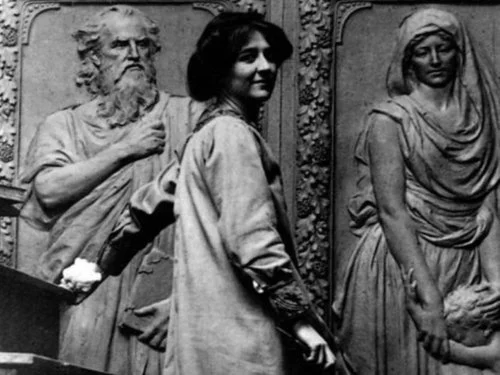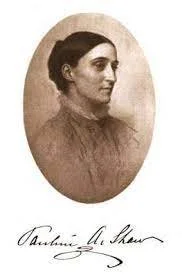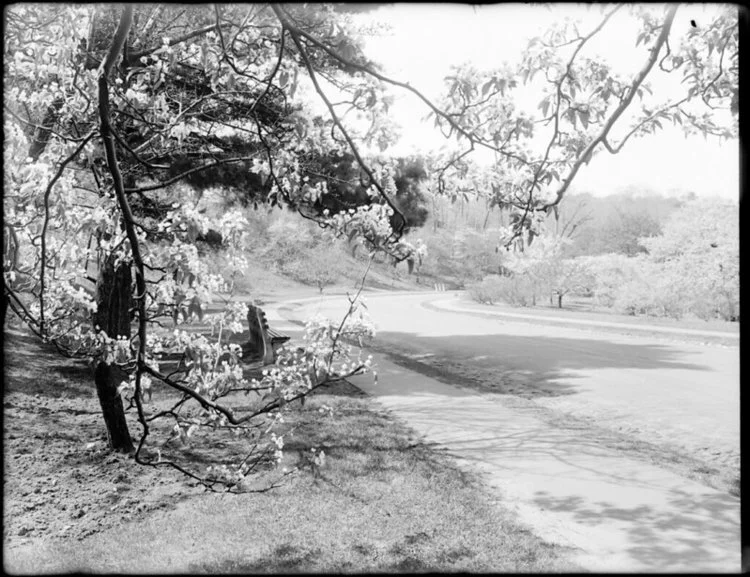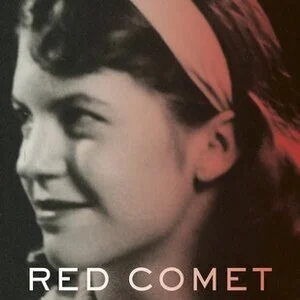People
A bronze eagle by an unknown Japanese master at Forest Hills Cemetery in Jamaica Plain, MA marks the grave of Lieutenant Kitchell Snow. Lt . Snow was a notable figure in early aviation history, particularly in New England.
A talk by Dr. Wendy L. Rouse on her book 'Public Faces, Secret Lives: A Queer History of the Women’s Suffrage Movement' in which she explores the the important role of queerness and queer suffragists in the fight for the vote. The traditional narrative of suffrage history sanitized the lives of suffragists contributing to the historical erasure of the queer history of the movement. Yet, it was often their very queerness that helped propel the movement forward.
A talk by Dana Pilson on the remarkable career of sculptor Daniel Chester French. While most well-known for his statue of the Minute Man for Concord and the colossal seated Abraham Lincoln for the Lincoln Memorial in Washington, DC, French sculpted almost one hundred other monuments and memorials throughout the country. The Boston area is especially rich with outdoor, public works by French, and three notable ones can be found in Forest Hills Cemetery.
Professor Paul Burlin, the author of the new book Charles F. Dole, Liberal Theology and Reform: A Life Well-Lived provides a talk about this remarkable clergyman who was at the First Church in Jamaica Plain, Unitarian Universalist for 40 years.
Elizabeth Curry Moloney was a Bostonian who fought for the rights of women and children throughout her life. She was appointed as the first Supervisor of Mother’s Aid for the Commonwealth of Massachusetts, a position she held until she retired in 1943 at the age of 70. After retirement she moved to 49 Prince Street, where she lived until her death in 1950.
A talk focusing on the remarkable achievements of sculptor Evelyn Beatrice Longman, the only female student and assistant in the studio of Daniel Chester French. The two artists shared a close professional and personal relationship and the presentation highlights the many intersections and cross-currents between their works, including the exquisite Slocum Memorial in Forest Hills Cemetery.
A talk entitled Historic Images of James Michael Curley and His Family which was a joint presentation by the Emerald Necklace Conservancy and the JPHS. Video of an event that was held via Zoom on November 11, 2021.
A talk entitled The Legacy of Pauline Agassiz Shaw which was given as part of the Lowell Lecture Series at the Paul Revere House. Video of an event that was held via Zoom on October 12, 2021.
Dr. Mary Morey Pearson was born in Colombo, Sri Lanka and graduated from the Boston University School of Medicine in 1885. She lived at 45 Eliot Street from 1910 to the end of her life (1931). She worked as the Medical Director for the American Benefit Society for much of her career and was an advocate for homeopathic medicines. It’s thought she had a medical practice at her home.
The Q&A session that came after the film screening of Borderland: The Life and Times of Blanche Ames Ames. Video of an event that was held via Zoom on June 5, 2021.
Aaron Schmidt, the Curator of Photographs for the Boston Public Library’s Special Collections speaks about Leon Abdalian. The photographer Leon Hampartzoum Abdalian was born in 1884 in what was Cilician Armenia, then located in the Ottoman Empire (now modern Turkey). He migrated with his family to the United States in April of 1896 and they eventually settled in JP. It is believed that he was largely self-taught as a photographer. For most of the time he was photographing (1913 -1967) he also worked full-time as a conductor on the Boston Elevated Railway.
This program was supported by a grant from the Bridge Street Fund, a special initiative of Mass Humanities. Photograph collection at the Digital Commonwealth.The event was held on April 25, 2021 at 2:00 p.m via Zoom.
Dr. Heather Clark discusses her acclaimed biography Red Comet: the Blazing Path and Brief Life of Sylvia Plath. Heather talks about her motivation for undertaking this book and the journey she took while writing it. After that, she takes questions from the audience.
Susan Dimock was among the first female physicians in the US recognized as a surgeon. Apprenticed at the age of 18 to Dr. Marie Zakrzewska at the New England Hospital for Women and Children, Susan was recognized as exceptionally talented. In September of 1873, a seven-year-old girl from Nantucket was admitted to the NEHWC with a large tumor. Using ether as anesthetic, Dr. Dimock performed an operation to remove the tumor.
In August 2020 the JPHS was contacted by Keith Hammitte, who owns the house at 24 John A. Andrews Street. Keith had found an old toolbox in his basement containing hundreds of financial records of Robert F. Knapp, who had previously lived in the house.
Jamaica Plain Spoken was a video/interview project that JP musician Rick Berlin started with his friend Todd Drogy in 2004. It consists of over sixty interviews with people of all genders, beliefs, ages and ethnicities. Just a bunch of local characters describing their lives and offering their opinions about Jamaica Plain. The project was stopped due to a lack of funding, so the YouTube clips are all that remain. Those links are gathered here.
A brief biography of Christopher Jackson Spenceley, a Boston businessman of the latter half of the 19th century who constructed the C.J. Spenceley Block in 1888. The yellow brick building that stands at the intersection of Columbus Avenue and West Walnut Park.
Learn about the Glennon family living in Jamaica Plain and Roxbury from 1880-1940. Employment in the Thomas G. Plant Shoe Factory and the Burton Brewery provided the family with both opportunity and hardship.
Walter Hoerner worked for Haffenreffer Brewery from 1933 to 1959. He was the chief engineer at Haffenreffers's property at 251 Heath Street. The building was used primarily for storage and as a workshop for coopers who built and repaired wood barrels.
In 1918 a US Coast Guard Cutter was torpedoed in the Irish Sea. One of its victims was from Jamaica Plain. One hundred years later his next-of-kin is being sought to receive the Purple Heart awarded to Lt. John Thomas Carr.
On the crest of Milton Hill, the highest drumlin in Forest Hills Cemetery, lie two recumbent stone lions shaded by upright Japanese yews, part of a monument honoring the artisan Pietro Caproni.
A collection of 956 film negatives that document James Michael Curley during the years 1934-1958.
This story of the last practicing blacksmith in JP is based both on personal observation of Lovett’s McBride Street blacksmith shop in the 1940s and 1950s, and on an April 2017 interview with John R. Lovett, the last farrier’s son.
Life for this busy man, who created more than 180 pieces of sculpture in less than fifty hears, circled around his home in Jamaica Plain MA, his studio, his professorship as head of the Sculpture Department at the School of the Museum of Fine Arts Boston.
A serendipitous journey of discovery kicked off by an Ebay offering of “three journals about Jamaica Plains, Mass.”
Maud Cuney Hare was a multi-talented genius: pianist-lecturer, composer, playwright, biographer, poetry editor, folklorist, Black music historian and collector, founder and director of The Allied Arts Centre in Boston.
In the early 1950s a group of returning veterans who had grown up together as the Rosemary Rosebuds, from Rosemary and South Streets, decided to form an association to expand their social activities which until then were spontaneous outings to the movies, day-trips to the beach, and various sports events and parties.
Benjamin Franklin Sturtevant (1833-1890) was a Jamaica Plain inventor and industrialist who filed more than 60 U.S. patents.
Benjamin Bussey (1759-1842) created an endowment at Harvard for the establishment of an undergraduate school of agriculture and horticulture to be called the Bussey Institution.
Reprinted extracts from the 1812-54 diaries of our Brookline neighbor, Benjamin Goddard (1766-1861). He was one of the 15 children in the fourth generation of the family raised on the Goddard Farm,






























In 1845, Daniel Bacon, a retired China trade captain from Barnstable, bought some of Prince's land and the next year built a mansion behind the present 156 Prince Street.